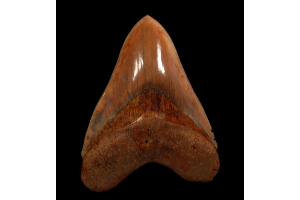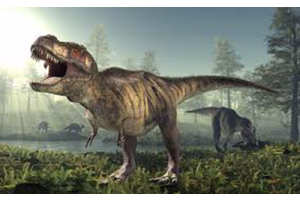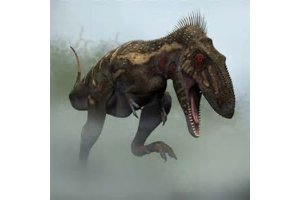Page 2 - Gary Greaser
- - August 11, 2025
Beneath layers of earth and time lies a delicate world forgotten by most but remembered by stone. These are not monuments or artifacts crafted by human hands—they are whispers of life itself, preserved with quiet precision. From tiny fins to delicate spines, fossilized fish from ancient lakebeds reveal a world teeming with movement and mystery. Somewhere in the middle of this incredible history lies the charm and significance of green river formation fossils, a subject of deep fascination for collectors, educators, and curious minds alike.
A Window into a Prehistoric Freshwater World
Roughly 50 million years ago, the region that now encompasses parts of Wyoming, Colorado, and Utah looked vastly different from its current appearance. Back then, it was home to a series of large, subtropical lakes that supported a wide array of plant and animal life. These waters provided nourishment, shelter, and balance to an ecosystem whose residents left behind one of the richest fossil records ever discovered.
- - August 11, 2025
Millions of years ago, a sleek, serrated-tooth predator ruled the warm coastal waters of what is now North America, Europe, and parts of Africa. Today, that same marine hunter exists not in the oceans, but in fossil collections and museum displays. Revered by fossil lovers and paleontology buffs, the snaggletooth shark and its uniquely curved teeth—especially from the extinct species Hemipristis serra—have transitioned from terrifying predator to sought-after relic. Here at Buried Treasure Fossils, we proudly offer a curated selection of these teeth, prized for their rarity, beauty, and historical significance.
From Ocean Predator to Fossil Rarity
The snaggle tooth shark, scientifically known as Hemipristis serra, made its first appearance during the Oligocene epoch, which dates back approximately 30 million years. This ancient shark belonged to the Weasel shark family, a group known for their agile hunting abilities and distinct dental adaptations. Over time, Hemipristis serra evolved
- - August 11, 2025
Few fossils spark curiosity and admiration quite like those of sharks. Their unmistakable shapes, razor-sharp edges, and deep historical significance make them among the most fascinating fossils to discover and collect. But what exactly makes shark teeth so prevalent in the fossil record? To answer this, we must explore a unique combination of shark biology, fossilization processes, and the role these teeth have played throughout human history.
From ancient tools to symbols of protection, real shark teeth for sale connect us to prehistoric oceans and human culture in a way few other fossils can.
The Natural Abundance of Shark Teeth in Fossils
The key to understanding the abundance of shark teeth in the fossil record begins with the sharks themselves. Unlike many animals, sharks have skeletons made entirely of cartilage, a flexible, lightweight material that does not fossilize easily. This means that aside from their teeth, sharks leave behind very few fossil traces.
However, shark teeth
- - August 11, 2025
When you hold a fossilized shark tooth in your hand, you’re not just gripping a hardened shard of ancient history, you’re clutching a direct, tangible connection to a world millions of years gone by. These teeth are more than just relics; they are silent storytellers that reveal secrets about creatures that once ruled the oceans long before humans walked the earth.
But what exactly do fossilized shark teeth tell us about prehistoric sharks? And why do these teeth remain some of the most sought-after invaluable fossils today? If you’ve ever wondered how these simple fossil shark teeth for sale can tap into a vivid picture of ancient seas and apex predators, you’re about to discover the compelling answers.
In this article, we will explore into the fascinating world of fossilized shark teeth, unraveling the extraordinary insights they provide into the anatomy, behavior, evolution, and environment of prehistoric sharks.
Fossilized Shark Teeth: Nature’s Time Capsules
Sharks have been swimming
- - August 11, 2025
When you think of prehistoric power and natural awe, few things compare to the toothy legacy of the Great White shark. These apex predators, both feared and revered, have captivated scientists, collectors, and ocean lovers for generations. But beyond the myths and movie madness, Great White teeth hold a prized place in the world of fossil collecting. Why? Their rarity, exceptional condition, and undeniable collector appeal make them one of the most sought-after fossils on the market today.
Let’s take a closer look at what makes these iconic teeth such a standout in any fossil collection.
Nature’s Design: Why Great White Teeth Are Instantly Recognizable
The Great White shark—scientifically known as Carcharodon carcharias—is a true marvel of evolution. One of the most defining characteristics of this species is its teeth. Wide, triangular, and densely serrated along the edges, they are designed to cut through flesh and bone with surgical precision.
Unlike many other fossilized teeth,
- - August 11, 2025
Have you ever wondered what it would be like to hold a piece of the Ice Age in your hands? Imagine discovering a massive tooth or jawbone that once belonged to a giant bear that lived more than 25,000 years ago. That is the magic of cave bear fossils. These ancient remains continue to spark curiosity among scientists, collectors, and nature lovers worldwide.
So how rare are they? And why do they matter so much to science? Let’s explore the world of cave bears and the fossils they left behind.
Who Were the Cave Bears?
Cave bears, scientifically known as Ursus spelaeus, inhabited Europe during the Ice Age. These massive creatures were bigger than most modern bears. Some males weighed over 1,000 pounds and stood more than 10 feet tall when on their hind legs.
They got their name because they often lived and died inside caves. These shelters protected their bones from weather and animals, which helped some remains survive for thousands of years. Thanks to this natural protection, we now have
- - August 11, 2025
Among the many fossil treasures unearthed from the Hell Creek Formation, one stands out for its sheer uniqueness, historical intrigue, and collector prestige. Within the first 60 words, we recognize that dinosaur claws from Anzu wyliei—often linked to the striking red claw dinosaur nickname—have become the ultimate grail for serious fossil collectors and investors. Their allure lies not just in their rarity, but in the story they tell about one of North America's most fascinating prehistoric predators.
The Rise of the “Chicken from Hell”
Formally described in 2014, Anzu wyliei burst onto the paleontological scene with both scientific excitement and pop culture flair. Nicknamed the “Chicken from Hell,” Anzu was a large, feathered oviraptor that roamed the Late Cretaceous landscape of what is now Montana and South Dakota. Reaching lengths of 13 feet and weights of around 600 pounds, it possessed powerful hind limbs, a toothless beak, and long arms ending in formidable claws.
Those claws—bony
- - August 11, 2025
Have you ever looked at a stone and wondered if it once belonged to something alive—something that roamed the Earth long before humans existed? There’s a quiet magic in fossil hunting that goes beyond science and enters the realm of connection. When you hold a fossil, you're not holding a rock. You're holding a story. One such story is told through an ancient molar—a Gomphotherium tooth for sale, a piece of prehistoric history preserved in stone.
Between the lines of age and geology lies the tale of a creature that once trampled forests and plains, long before mammoths ruled the tundra. Let’s step gently into this ancient world and discover why a single fossil can hold so much significance for those who cherish the past.
The Mammal Before Mammoths
Long before mammoths became symbols of the Ice Age wonder, the Gomphotherium walked the Earth. It wasn’t a giant in the way dinosaurs were, but it had an unmistakable presence. Shaped like an elephant but with distinct differences, this ancient
- - August 11, 2025
Fossils carry stories that never fade. Mosasaur teeth capture the strength and legacy of a creature that once ruled ancient seas. These marine reptiles hunted with power and precision. Their teeth show that. We offer authentic mosasaur teeth for sale that reflect their ferocity, scale, and unmatched place in natural history. Each specimen holds more than a physical form. It has evidence of a predator’s life in prehistoric oceans. Collectors who know fossils understand that a real tooth reveals more than age. It reveals behavior, diet, and presence. That’s where the value lives.
Here is more detailed information:
Recognize the Stories Fossils Carry
Mosasaur teeth never repeat. Each one looks different. Shape, length, and enamel details tell what happened during the creature’s life. Some teeth show sharp points. Others show wear from frequent feeding. These marks give insights. You can see how one tooth broke down prey or how another one aged with the animal. Collectors value these signs.
- - August 11, 2025
Dinosaurs, the mighty rulers of Earth’s distant past, continue to fascinate us with their immense size, power, and the mystery surrounding their extinction. Their legacy fuels imagination and awe across generations. Today, that fascination can take a tangible form. For collectors, enthusiasts, and natural history admirers, owning a real piece of this ancient world is no longer just a dream. Buried Treasure Fossils brings it within reach with an extraordinary selection of dinosaur fossils on sale from the Jurassic and Cretaceous periods. Each authentic specimen offers a rare glimpse into prehistoric life and a lasting connection to Earth’s ancient history.
Here are a few aspects to consider about dinosaur fossils:
A Window Into the Cretaceous and Jurassic Eras
Dinosaurs roamed the Earth for more than 160 million years, with the Jurassic and Cretaceous periods standing out as their golden ages. During these timeframes, a wide variety of iconic dinosaurs thrived — from the massive, bone-crushing







